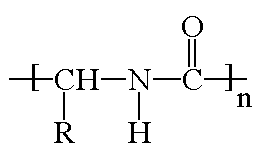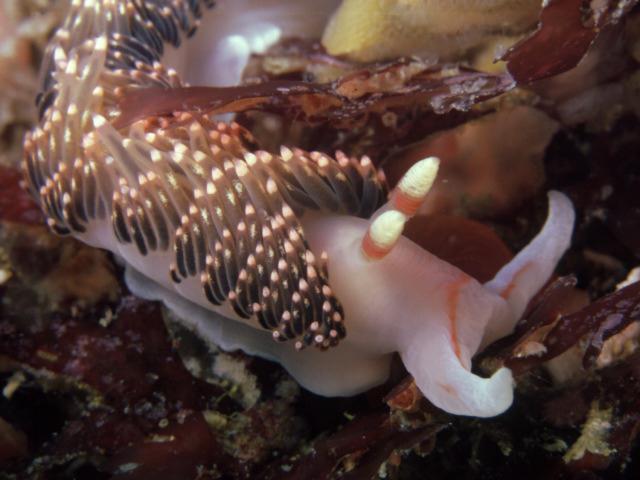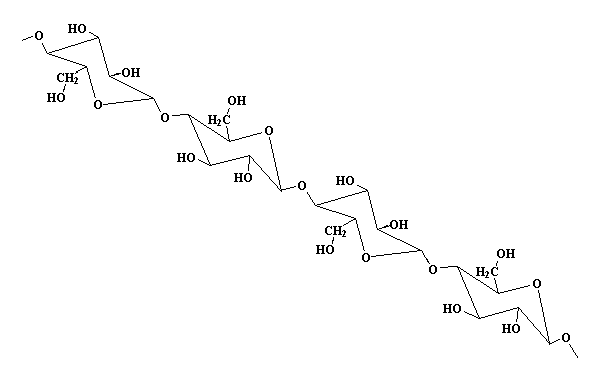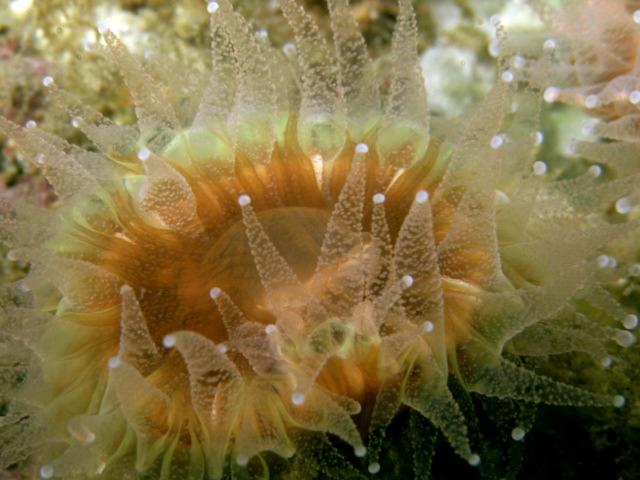The most important part in the building of a coral reef is the symbiotic relationships with zooxanthellae. There are also many natural polymers found within the species that occupy these realms. The most commonly found polymers are protein and cellulose, and cellulose is by far the most abundant.
There are creatures called sea cucumbers, obviously because they look like cucumbers, but are really living animals. They have strong muscles which contain protein.
Protein is a natural polymer, and it looks like this:

Sea cucumbers also have a slime trail that they
secret. The slime trail is made up of mucopolysaccharides. To better
understand this I will break this word down. Muco means mucus, or
in other words----slime. Polysaccharide is a natural polymer, in fact it
is the building block for many things. It is also known as a type of
sugar.
For more information on polysaccharides click here.
Polysaccharide can be broken down into glucose
molecules, which can be found in virtually all of the food we eat!
Another creature that lives around coral reefs
and also  secretes a mucopolysaccharide is a
nudibranch. The nudibranch uses this secretion to find prey or possibly
attract a mate.
They are also known to contain Glucosaminoglycans (GAGS) which is used in
medical applications for treating joint, ligament and tendon conditions.
Chondroiten, a Glucocaminoglycan substance, is thought to have uses
in treating arthritis.
secretes a mucopolysaccharide is a
nudibranch. The nudibranch uses this secretion to find prey or possibly
attract a mate.
They are also known to contain Glucosaminoglycans (GAGS) which is used in
medical applications for treating joint, ligament and tendon conditions.
Chondroiten, a Glucocaminoglycan substance, is thought to have uses
in treating arthritis.
Among the many creatures living within coral reefs are plants. These plants provide photosynthetic
operations. This just means that they use sunlight to make oxygen,
which has to be really interesting since they are under the water. They
also contain cellulose. Cellulose
is not the only polymer found in plant cell walls. There are other
materials, but they have not been researched completely enough
to explain all of their potential uses.
Cellulose looks like this:

This molecule of cellulose closely resembles the molecule of chitin. To get a closer look at these two molecules together click here
The group of organisms called Sea anemones are similar
to the jellyfish only these creatures  don't move around as much. They
mostly stay in one place, such as a coral reef, but they do have the
ability to move. Sea anemones, such as Metridium senile have
layers of mesoglea which are a source of
collagen, a type of protein.
Plus their inside core is made up entirely of protein.
don't move around as much. They
mostly stay in one place, such as a coral reef, but they do have the
ability to move. Sea anemones, such as Metridium senile have
layers of mesoglea which are a source of
collagen, a type of protein.
Plus their inside core is made up entirely of protein.
If you want to see some more pictures of coral reefs and the creatures who live there click here.
